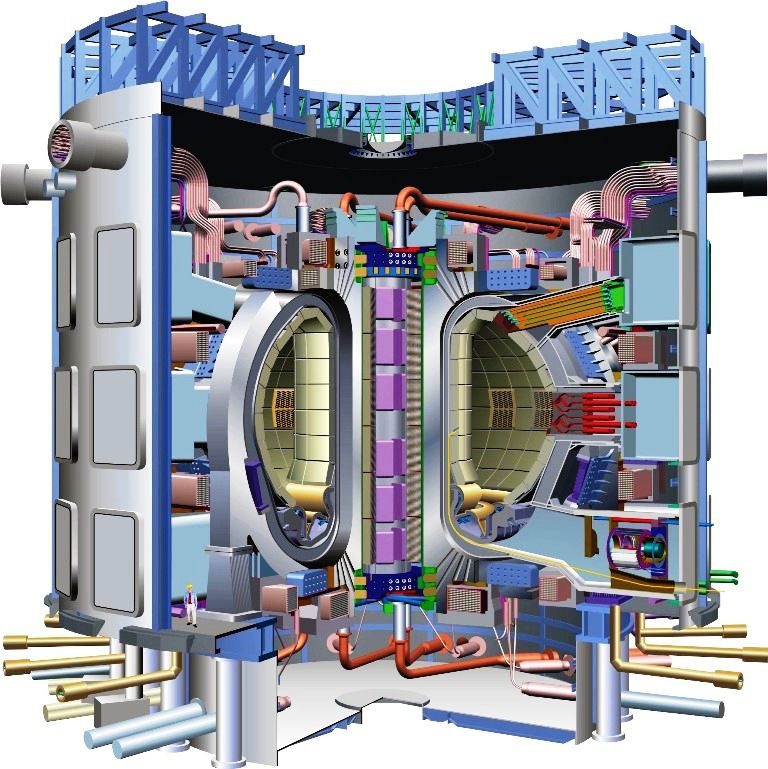-
 Grained rock
Grained rock
-
 Dendroenergy
Dendroenergy
-
 Monoclinic system
Monoclinic system
-
 Covalent bond
Covalent bond
-
 Holocene
Holocene
-
 Somatic cell
Somatic cell
-
 Brunner Glands
Brunner Glands
-
 Flag
Flag
-
 Biometry
Biometry
-
 Yohkoh
Yohkoh
-
 Green bean
Green bean
-
 Reflected light
Reflected light
-
 Oncomodulin
Oncomodulin
-
 LPG
LPG
-
 Paramagnetic
Paramagnetic
-
 Granodiorite
Granodiorite
-
 Bicarbonate
Bicarbonate
-
 Coal
Coal
-
 Conventional cytotoxic medicine
Conventional cytotoxic medicine
-
 Carcinogenesis
Carcinogenesis
-
 Phagocytosis
Phagocytosis
-
 ISP
ISP
-
 Hysteroscopy
Hysteroscopy
-
 Isotropic
Isotropic
-
 Planck length
Planck length
-
 Data stream encryption
Data stream encryption
-
 Volcanic rock
Volcanic rock
-
 Pallasite
Pallasite
-
 Auscultation
Auscultation
-
 Gravitational wave
Gravitational wave
ITER
The goal of the ITER (International Thermonuclear Energy Reactor) project, which is to be located at the Cadarache site in the south of France, is to demonstrate the scientific and technological feasibility of producing energy by atomic fusion.
Controlled fusion
Controlled fusion is a major scientific and technological challenge which could solve the crucial problem of having new energy resources available for the foreseeable future. Unlike fission energy, fusion energy gives us hope of having a clean and abundant source of energy during the 21st century. At a time when fossil energy is set to dwindle in the next 50 years, it is vitally important to explore the potential of all other energy sources.
300 litres of sea water could provide 1 gram of deuterium. In other words sea water alone could supply world energy needs for around one billion years.
The goal of ITER is to demonstrate the scientific and technical feasibility of fusion energy. In a tokamak type reactor, a mixture of deuterium and tritium (hydrogen isotopes) can be taken to a temperature of the order of 200 million degrees sufficient for a controlled self-sustaining fusion reaction.
It can reasonably be estimated that the first electricity produced by a prototype thermonuclear fusion reactor could be seen by 2050.
How it works
The deuterium-tritium fuel mixture is injected into a chamber where, through a confinement system, it changes to a plasma state and burns. The reactor produces ash (helium atoms) and energy in the form of fast particles or radiation. The energy produced in the form of particles and radiation is absorbed in a special component the "first blanket" which, as its name indicates, is the first material element that lies beyond the plasma. The energy which appears in the form of the kinetic energy of neutrons is converted into heat in the tritium breeding blanket located outside the first blanket but still inside the vacuum chamber. The vacuum chamber is where the fusion reaction is confined.
The first blanket, the tritium breeding blanket and the vacuum chamber are of course cooled by a heat extraction system. The heat is used to produce steam and power classic turbine with an alternator to produce electricity.
 ITER
ITER
Latest
Fill out my online form.



